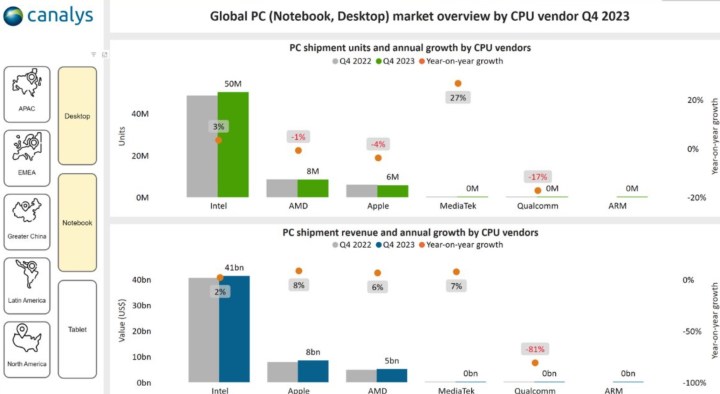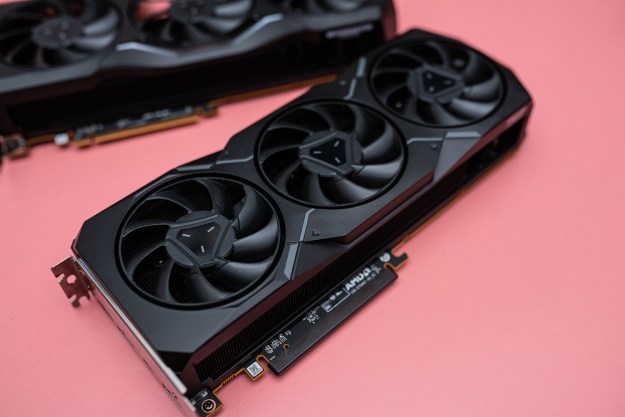
It’s no secret that between Intel and AMD, it’s Intel that holds the majority of the market — but a recent market analysis report really highlights just how much Intel beats both AMD and Apple. While both Intel and AMD make some of the best CPUs, and Apple has its own excellent proprietary silicon, Intel’s CPU shipments trump them both. The report tells us that Intel controls a whopping 78% of the PC processor market.
The information comes from Canalys, a PC industry research firm. It’s worth noting that it excludes tablets, which would have bumped up Apple’s numbers a bit, as well as Qualcomm’s. But zooming in on the PC CPU market alone, including desktops and laptops, tells a different story. The research shows a 78% market share for Intel and 13% for AMD, while Apple accounts for about 8% or slightly more. The rest belongs to MediaTek, Qualcomm, and ARM.
For Intel, shipments increased by 3% during 2023, while AMD saw a decline of 1%, and Apple fell by 4%. Canalys also notes that Intel’s overall PC shipment revenue went up by 2% year-over-year to $40 billion. Meanwhile, Apple’s revenue hit $8 billion in the final quarter of 2023, representing 8% year-on-year growth, and AMD saw 6% growth with $8 billion in revenue.

The research firm also analyzed the global PC shipments and revenue on the basis of which PC vendor shipped the most computers in the past year. It turns out that Lenovo, Dell, and HP absolutely dominate that space, accounting for over 70% of all Intel CPU shipments. The split between Lenovo and HP was pretty even, at 25% and 23%, respectively, while Dell held 19% of the share.
For AMD, the split was a little different — Lenovo made 40% of all AMD-based computers, followed by HP with 23%, and Dell with a measly 3%. Asus was more prominent here, at 14%. These numbers aren’t exactly surprising. If you’re in the market for a laptop, chances are that it’ll be made by one of these four companies, although laptops with AMD chips are much harder to spot.
Intel’s had a few rough patches in 2023, with the company reporting its largest financial loss ever with a 133% drop in earnings per share and a 36% year-over-year drop in revenue. However, Canalys’ report shows that the company is still doing well despite the financial losses.
As always with these reports, it’s important to note that shipments don’t equal sales, but the fact that these companies are shipping such massive numbers of CPUs shows that we’re dealing with a healthy, growing PC market.
Editors' Recommendations
- It just became the perfect time to buy a last-gen Intel CPU
- I’ve reviewed every AMD and Nvidia GPU this generation — here’s how the two companies stack up
- Nice try, Intel, but AMD 3D V-Cache chips still win
- AMD vs. Intel: the rivalry has never been more fierce
- How Intel could win the GPU war this year





